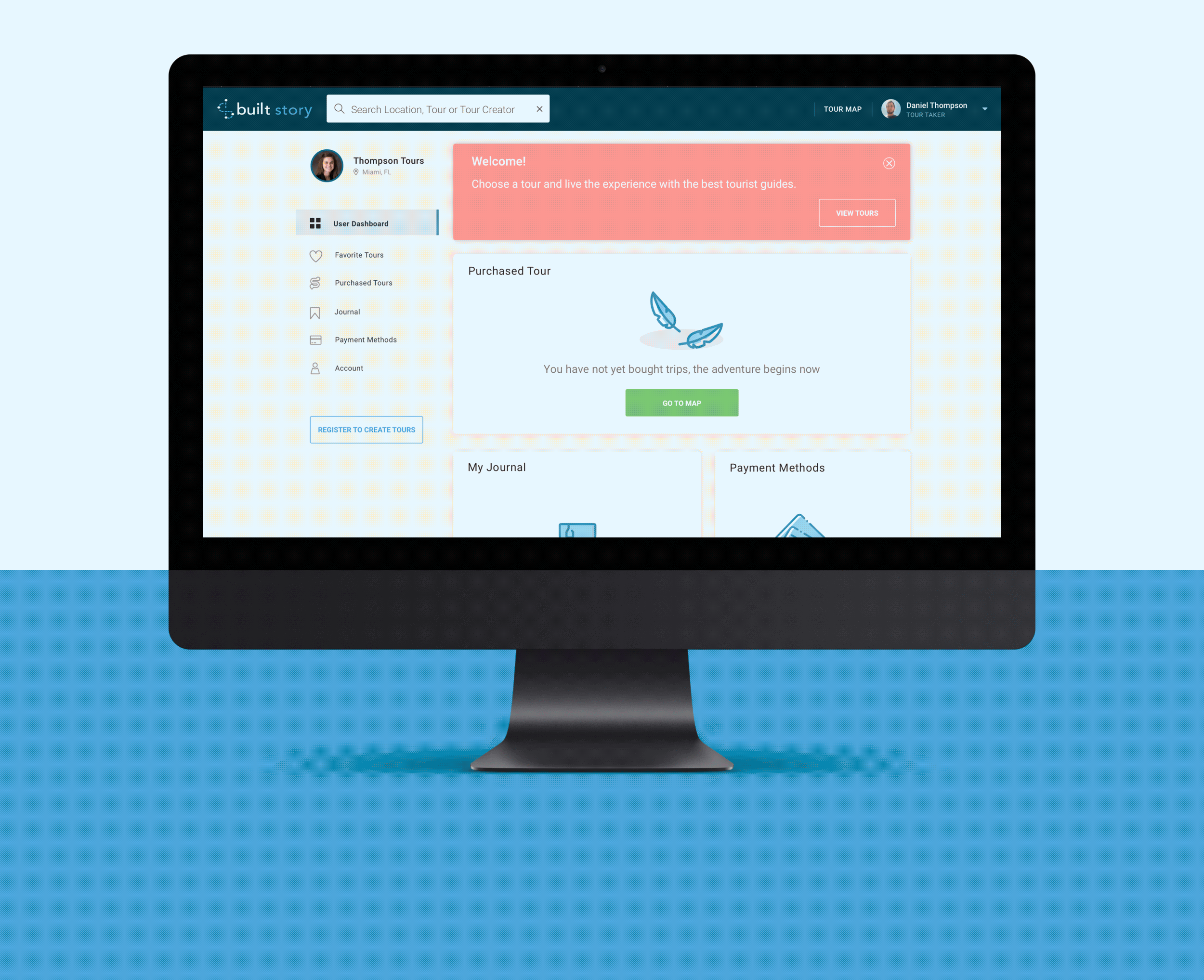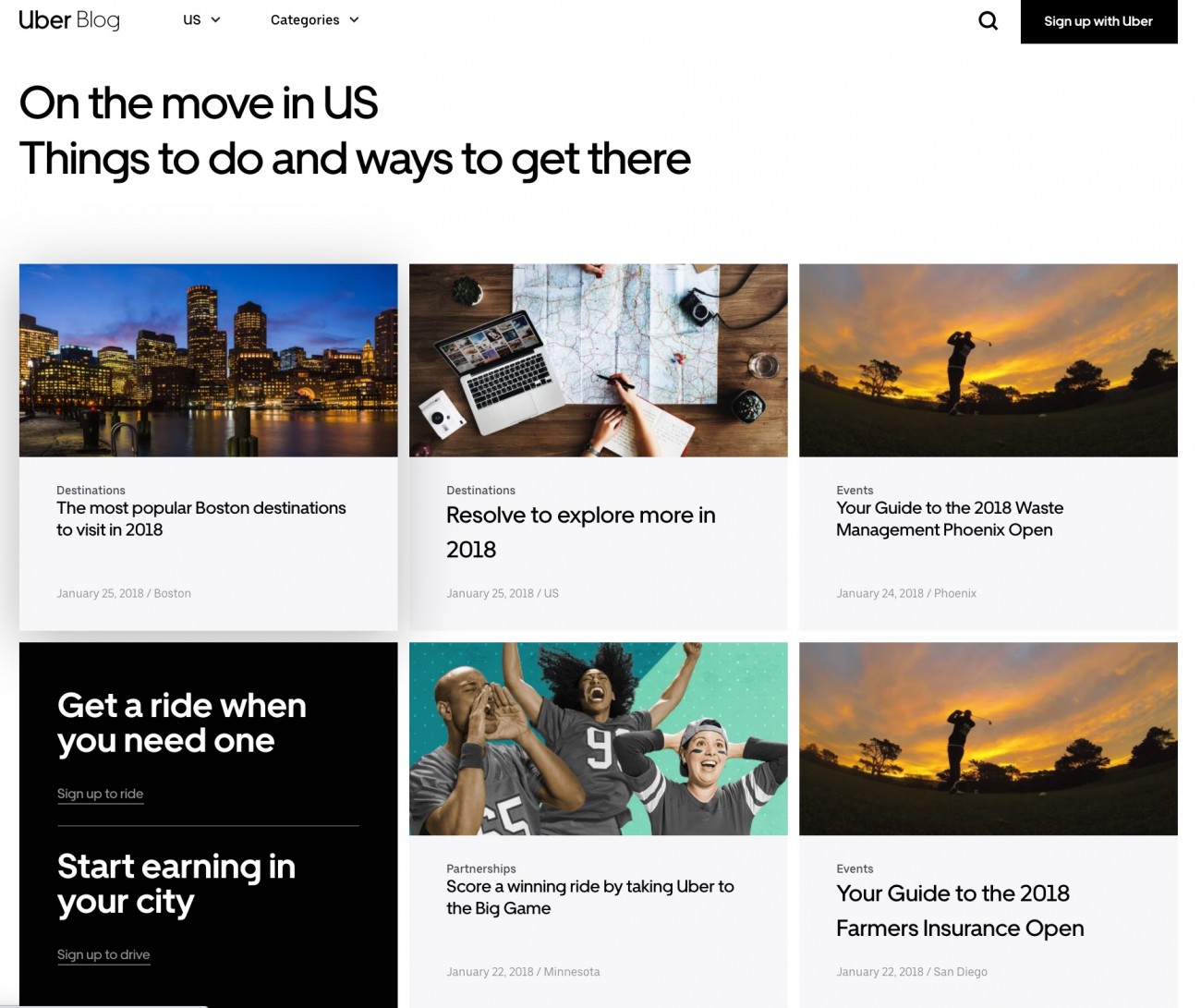KEY TAKEAWAYS
-
Website speed is vital. If your website takes longer than 3 seconds to load, you are losing impatient viewers to competitors with faster e-commerce pages, and your spot in search engine rankings will suffer.
-
Good website design makes a quick impact on viewers, who are judging and making decisions quickly. This design should be even better on your mobile site than your desktop, as most websites are accessed on viewers' phones.
-
Understanding and implementing good structured data and meta tags will help set your business up for success in generating on-site traffic from organic SEO, or unpaid, algorithm-driven results.
-
Maintaining quality content on your site is one major way to improve your search rankings.
-
Analytics can show where to implement changes to your sales and operations, driving better decision-making and saving you time and money.
This article explores critical strategies for managing and improving good website traffic for a successful e-commerce business, complete with helpful tools, tips, and tech to simplify the process. Learn strategies to capitalize on your website traffic, generating more leads and sales from your new and return visitors.
Capitalizing on Website Traffic
Build a website that establishes trust in less than 2 seconds.
While we will briefly cover the process of driving external traffic to your site below, this article will focus mainly on the use of more organic, on-site SEO to draw visitors to your website.
Here, you will learn about the strategies that can be implemented internally on your website to improve on-site SEO in order to drive web traffic and reduce your bounce rate, maintaining that traffic for at least 30 seconds.
It takes about 50 milliseconds (that’s 0.05 seconds) for users to form an opinion about your website that determines whether they like your site or not, whether they’ll stay or leave.
In terms of driving e-commerce sales, the first step is to give visitors a memorable first impression with a look and feel that keeps them scrolling. Read more about 10 crucial elements of successful websites.

The engaging visuals on the Amino Mason home page pop immediately, engaging visitors with animated banners that alternate, drawing your eye in further.
A Quick Note on External, Off-Site Traffic
Even though this article is about on-site SEO improvements, we will afford a couple of paragraphs here to discuss some of the external elements involved in driving traffic to your site. We could compose an entire article just dedicated to that…so stay tuned.
In terms of external, or off-site traffic, there are plenty of valuable resources to help get the desired traffic to your site. These include setting up a good social media presence, publishing press releases, running paid ads, influencer marketing, brand mentions, and external lead generation campaigns. Read more on B2B and B2C marketing strategies here.
Depending on your industry focus, you can locate the best strategies to generate external traffic to your site. For example, B2C companies might have better luck with social media platforms that are image-heavy, while B2B companies would benefit from investing in Google+ promotion and Twitter, ideal for more personalized search results. Learn more about ramping up your social media strategies here.
1. Improve speed, gain conversions.
Your visitors want content and they want it fast.
The number one most important focus for your e-commerce site is its speed. If your site (including your mobile site) does not load instantly, you will lose people.
According to one study, the average Speed Index speed is 4.7 seconds on desktop and 11.4 seconds on mobile. Google’s best practice is to have a speed index under 3 seconds.
When your site is slow, your rankings decrease in search engines. Additionally, if your website is taking longer than 3 seconds to load, not only are you losing your spot in search engine rankings, but you are also losing impatient viewers to competitors with faster e-commerce pages.
There are many effective tools to help measure your site speed. Consider conducting speed audits with tools like Google Lighthouse or WebPageTest.
Website performance metrics tools:
WebPageTest
One of the most popular free tools for measuring webpage performance, WebPageTest allows you to run web performance tests on your site from a number of different locations across the world in a number of different browsers.
Google Lighthouse
An open-source, automated tool for improving the quality of web pages that can be run against any site. It audits load times, accessibility, and search engine optimization.
Google PageSpeed Insights
This tool analyzes your site's front-end performance, providing optimization suggestions and insights, giving your website a score between 0 to 100 points.
Google’s free mobile optimization test tool
Test how easily a visitor can access your page via mobile, and analyze the results for your URLs from various regions and devices with this simple tool offering professional site speed monitoring.
GTmetrix
GTmetrix is a free basic tool that analyzes your page's speed performance using PageSpeed and YSlow, generating scores for your pages and offering insight and recommendations. A registered or paid account offers testing automations and location selection.
Pingdom
Popular website speed test tool which allows you to analyze your WordPress website and diagnose performance issues with monitoring functionalities for page speed, uptime, transaction, server, and visitor insights.
MachMetrics
Analyze and optimize your website speed with powerful options to measure results for both desktop and mobile. MachMetrics provides easy setup to implement speed tests, generate metrics, conduct multi-step testing, receive emailed reports, and understand trends.
SpeedCurve
SpeedCurve is built on top of WebPageTest to track dozens of web performance metrics, create budgets, and receive alerts. Monitor front-end performance and compare your results to your competitors.
You should track your site’s metrics regularly as its speed will fluctuate over time. Plus, if anything is wrong with your site, you will know quickly.
Increase your speed in other ways.
Streamline your page by eliminating any factors that slow downloading speed, like hosting too many assets on every page.
Have you optimized your images?
Sometimes the type of images you add to your pages can slow down your page speed. Optimize your images, video, and media files, so they don’t cause lagging and increase bounce rates.
Heavy images not only slow down your site but also increase the page weight, causing you to lose viewers, more so even on mobile networks.
Using large PNGs or heavy images will significantly slow down your page speed. The common types of images used online are JPGs (or JPEGs), PNGs, GIFs, and SVGs.
Make sure you reduce the physical image size (dimension) so it is optimized for your pages and site. You can do this in many available image tools.
Save images appropriately, like using Photoshop’s Save for Web feature, so they are preserved in a form for displaying online. And compress your image files. Google has some recommendations too.
You can also implement back-end fixes like improved caching and hosting solutions. Storing your website in browser cache will help increase your download speed on return visits. In WordPress, there are convenient plugins like W3 Total Cache and ZenCache.
2. Create a great first impression.
Dazzle them above-the-fold.
Make sure your website has a good design that makes a quick impact on viewers, who are judging and making decisions quickly.
When you add eye-catching images and fun concepts above the fold on your web page, you keep your visitors on the page longer. Your above-the-fold section, or the portion of a web page visible in a browser window when the page first loads, is often the deciding factor over your overall bounce rate.
With first impressions formed in 0.05 seconds, users don’t have enough time to scroll down.
If your website is bad, it will be obvious in how little time you can retain viewers on your page. They will be looking at the impression quickly, so that first impression is vital.
According to one study, half of surveyed consumers (46.1%) assessed the credibility of sites based, in part, on the appeal of the visual design, including layout, typography, font size, and color schemes.
Spend time on ensuring your design lives up to your brand identity. According to research, viewers spend time focused on the website’s logo, main image, and navigation menu, among other things. So ensure that the feel and look of your company branding gives a great first impression.
If you spend $1 million on advertising in an attempt to drive traffic to your website only to lose your viewers in less than 3 seconds then you have wasted your money.
If the website isn’t captivating, you are reducing the amount of traffic and your viewers will bounce right out of your page in fewer than 8-10 seconds. For the sake of this article, let’s interpret bouncing to mean leaving within 10 seconds.
If you are trying to keep people there and they are making quick judgments, it does not matter what you say or do. 8-10 seconds is not enough time for them to truly digest the content, so it is really about the design of the site, how it loads, and the feeling that it evokes.
Optimize your e-commerce website for mobile viewing.
It is even more important that your mobile site can keep up or surpass the quality of your desktop site, as most websites are accessed on viewers' phones.
66% of e-commerce time is being consumed on smartphones.
With the majority of your e-commerce being conducted over mobile, smartphones, or smart devices, it is vital that your visitors' experience on mobile is as good as, if not better than your desktop version.

Omnichannel content for Best Beauty Finds is configured for mobile-friendly viewing.
Mobile viewers are more frequently impatient and well-researched, so they are not afraid to quickly find their target and transact business elsewhere.
Google reports that 40% of mobile consumers turned to a competitor’s web site after an unsatisfactory mobile Web experience, and 57% wouldn’t recommend a business with a bad mobile website.
B2B businesses see 40% of adults using mobile platforms to search for B2B products. First impressions are critical in determining e-commerce success, so it is vital that companies pay attention to making a good one.
Not only will a fast site and good design help you keep your customers, but Google’s smart algorithms will look at your page and analyze all aspects of it to rank it.
Its algorithms figure out whether it is user-friendly or not, whether it functions on desktop and/or mobile, the size of your menus, whether links are functional or broken, the distance between buttons, whether your items properly fit on the screen, and it will analyze and penalize you for it in your SEO rankings. So, if you want to rank better, make sure you keep up with mobile and the other ranking factors found here.
Engage your audience with the right look and feel.
When you have successfully capitalized on your website traffic, drawing in visitors to your e-commerce site, your next focus should be on increasing your conversion rate and your average order value.
One of the quickest and easiest ways to do this is by understanding and delivering the right look and feel, the story that your target audience seeks.
Audience relevance is number one when it comes to content effectiveness at 58%, but compelling storytelling takes a strong second place at 57%.
Your goal should be to get visitors to stay for more than a few seconds. How? The story, content, and design will keep them there.

Built Story’s engaging website design offers easy-to-use, visually appealing graphics that connect their brand story across different parts of the site and accompanying app.
If you have a website and you are running effective campaigns and social media, collecting leads or sales, it is critical that when that traffic is linked to you, your website has the right feel and validation for your unique target audience.
Your site should feel trustworthy and reliable, which can mean different things to different audiences, but across the board, it is vital that your site loads fast and connects to your viewers.
Use engaging visuals.
Think about what keeps you on a webpage: the images, graphics, visuals that bring the story to life. Identify and craft the feel for your unique brand identity. Then determine the right use of style in blogs, videos, and imagery, as this will make your products and content look appealing so that people stay on your website longer.
For example, blog posts that feature an image every 75-100 words get 2X more shares. And adding video can increase your SEO, along with engaging your visitors too.

By adding visuals that capture your visitors' attention, like this example from the Diamond CBD blog, you will increase their time on your site and improve your conversion rate.
Additionally, if you are using other effective channels like social media, showcasing your strong visuals across your channels can increase share-ability. Users are more likely to share interesting visuals, so when they share your content, your brand will look great, which will help your efforts everywhere else.
3. Drive better organic search results.
When it comes to generating on-site traffic from organic SEO, or unpaid, algorithm-driven results, understanding and implementing good structured data and meta tags will help set your business up for success.
If you have a wonderful website, but no one ever sees it because Google is not directing search results to your business, you will never achieve the ROI you’re seeking.
Optimize or format your website so that the quantity and quality of traffic increases, thereby providing a competitive advantage, boosting sales and maximizing conversions.
The effective use of structured data.
Structured data formats are rules that standardize the structure and content of any webpage, so that computers can process their meaning or semantics. The markup does not change your website, it just allows the metadata and text to be more meaningful to computers.
Structured data – also known as schema markup – is organized and tagged with unique groups of text which help search engines understand and classify the context, content, and purpose of that information to return more accurate results to searchers.
While this schema markup does not directly help your rankings, it will help clearly identify the content of your page, placing it in the right search queries. This makes it easier for search engine bots to find and index your pages. Learn more about schema markups here.
Using schema can result in increased visibility, improving the appearance of an organic search listing with enhancements (rich results or snippets) of your content in SERPs, which can improve click-through rates. Think about the impact of product images, ratings, prices, and availability, which help your organic listings stand out to searchers.
Take time to buildup the way your site displays correctly, because it is actually a valuable tool that will help drive the right traffic to your site.
Besides page speed which affects your SERP rankings, you can ensure you have the proper keywords needed to connect your site to your target audience. Set up your website with the metadata and SEO that will increase the right kind of traffic to your site.
Optimize your on-site SEO.
Google releases new versions of their algorithms frequently, with updates to its ranking factors. Search algorithms look at many factors, including the words of your query, relevance and usability of pages, expertise of sources, your location, and other settings. The weight applied to each factor varies depending on the nature of your search.
Once implemented, these changes have massive impacts on company rankings overnight, so it is important to keep your site up to date with these requirements in order to generate the desired organic SEO results.
For instance, in 2019, Google upgraded its algorithm and underlying hardware to support the BERT natural language processing (NLP) model. BERT helps Google better interpret natural language searches and understand context. This update negatively impacted unnatural, keyword-heavy results.
Using different kinds of tags tells search engines, social media platforms, and other systems how your website should appear, allowing you to customize display features to showcase the right features and improve your targeted traffic.
Improving your use of tags.
E-commerce can offer a host of customized tags, telling computers and programs all sorts of valuable information, including whether items are in stock or on sale, the type of product specified, meta tags for title and description, and other kinds of tags that Google uses.
We all know that meta tags are important but they truly do matter. How you name your pages, doing the right research on keywords, selecting the most relevant ones, organizing them in the right order. All of this plays a role in your SEO.
Having a unique title tag on every page that describes that specific page will be very important in helping improve your SEO. While the meta description itself does not play a role in SEO, it’s what will determine whether users click on your search result. Use information that will catch users' attention, but keep it within 160 characters. Google supports both page-level meta-tags as well as inline directives to help control how your site's pages will appear in Search.
Page-level meta tags are a great way to provide search engines with information about your web site, with each system processing only the meta tags they understand and ignoring the rest. When it comes to social, as with SEO, meta tags do not behave as a ranking factor, but rather the way your page appears on results and social media posts will influence online traffic and subsequently your ranking.
Search engines such as Google use metadata from meta tags to understand additional information about the webpage. They can use this information to display snippets in search results.

Writing compelling meta titles and meta descriptions that accurately describe original, good content with specific keywords will get your page quality clicks from users seeking your specific content, increasing conversions.
When you don’t include meta descriptions, viewers have no real idea about your page’s content or reliability. Have you ever found search results that looked less than reliable? Crafting meta descriptions that engage your reader and intrigue viewers will generate more traffic and add validity to your content.
Adding tags to your social media can help improve the appearance of your site, posts, and content, including your images and videos.
Using Open Graph tags (OG tags), Schema tags, and Twitter Cards are the typical ways to add social media tags, tags recognized by all major social media platforms including Facebook, Twitter, Google+, and LinkedIn. By pulling information from the meta tags, these apps display your website link accordingly.
Easily evaluate and visualize your content with Facebook’s Open Graph Debugger, test your schema tags with Google’s Structured Data Testing Tool, or access Twitter’s Card Validator Tool.
By adding these tags, you are tailoring the content of your site for your targeted audiences and platforms, ensuring you establish an omnichannel experience that captivates. When you share on social media, more engaging visuals will improve your share-ability and exposure across social media.
Additionally, a tool like the Chrome plugin meta Tag Analyzer can tell you if your most important meta tags are set up correctly.
Using long-tail keywords to generate organic search results.
In order to increase organic search traffic when designing your webpage, you should factor in more specific phrases, or long-tail keywords that come up online in order to corner your targeted market. By researching the content people are searching for, you are providing value to those users.
While it may seem counterintuitive to make your meta tags or text more specifically focused on generating what seem like arbitrary search results focused on specific phrases, the bulk of searches are not comprised of the most popular terms, but rather of long-tail keywords. Just think about the last question you asked Siri or Alexa.
Long-tail keywords are longer keywords with more specific phrases used frequently by visitors close to a point-of-purchase when browsing online or using voice search tools. You would think that by using shorter keywords, it would be easier to match search results, but with popular search terms, competition is incredibly intense and your ROIs will suffer. In order to really get attention on your page in a search results list, you’d have to pay more money to companies like Google to compete with the giant companies out there.
Long-tail keywords may bring in less traffic, in terms of quantity, but the ROI will be much higher, as the visitors to your website will be more specifically focused on products like yours, since they are already close to a point-of-purchase.
You can use programs like Google Suggest, Google Ads, or Wordstream’s Keyword Tool to explore current search popularity. This will guide you towards the right metatag and long-tail keyword angles for your individual web pages.
Adding voice search SEO to your site.
You should also consider using voice search SEO to help influence your content, with the increased use of home speaker devices.
Voice searches are often longer and often more conversational than other searches, necessitating more natural language keywords and question words when targeting voice search results.
By 2020, almost 30% of all searches will be done without screens.
With remote work more prevalent each passing year, the use of tools like Alexa, Google Assistant, and Siri is increasingly impacting search results.
Even desktop searches are often done with voice search functionality.
25% of all Windows 10 desktop searches are done via voice.
Reworking your snippets can help you improve your ranking on search engines. Google’s featured snippets contain the most popular results in paragraphs, numbered lists, titles, bullet points, and brief answers to search questions. There has been an increase in the number of words in a search that surfaces a featured snippet. Backlinko finds the typical voice search result to be around 29 words and often structured around How or What questions.
You can cut costs and convert visitors into leads by answering relevant FAQs, optimizing for voice queries and long-tail keywords to maximize marketing and advertising opportunities via voice assistants.
SEO Tools
Moz
All-in-one SEO software suite with tools designed to improve search engine visibility, with helpful features like Link Explorer, Keyword Explorer, and Rank Tracker.
SEMrush
SEMrush is an SEO tool designed to optimize websites with profitable keyword research and strategy, with tracking tools, SEO audit features, and insight into backlinking.
SpyFu
SpyFu is a tool that allows you to search for any competitor’s domain and understand their placement on Google, Adwords, and both paid and organic ads, along with strategies to expand your business too.
Ahrefs.com
Digital marketing analysis toolset looks at backlinks, URL rankings, and more to analyzing SEO with valuable tools including a Site Explorer, Content Explorer, Keywords Explorer, Rank Tracker, and Site Audit.
Google Search Console
Free service offered by Google for helping you monitor, manage, and troubleshoot your website's presence in Google Search results, helping you to understand and improve how Google sees your site.
Wordstream Keyword Tool
This free keyword tool allows you to quickly and easily search for keyword or website URL to generate tailored keyword results to improve your traffic.
Google Analytics
This popular free digital analytics software from Google allows you to analyze in-depth detail from website visitors, including lead generation, click-through-rates, and insights into improving your website.
SEOWorkers Analysis Tool
This is a free SEO optimization analysis tool that helps you analyze and measure the ranking potential of your web pages, using the same spider technology as search engines.
Strengthen your internal links.
Focus on the quality and amount of links on your web pages.
Including defunct or excessive external links on your site or page tells search engines that your website might be fake. Additionally, adding too many external links on a page increases the chances that traffic will lead away from your page and your CTA.
You will want to position internal links to your website throughout your blog pages and content areas, to draw your viewers back into other areas of your site. This helps readers navigate throughout your site with ease. Instead of having to search for information, they can easily find it weaved throughout your site. It also helps set up how your website is organized and helps rank your site in search engines. Learn more ways to improve your internal SEO.
4. Create valuable, original, quality content.
Ensuring you have quality content on your site is one major way to improve your search rankings. Better search rankings mean more traffic to your website, giving you the chance to sell your products and/or services and improve lead generation opportunities.
How does content tie to search engine results?
Google updates its search algorithm parameters to better provide quality results to its users. Its algorithm is frequently updated to best serve its users, so some pitfalls to avoid would be generating nonsense content, keyword stuffing, defunct pages, and broken links, as these will all lower your search engine ranking.
Compose blogs full of valuable content.
There are quite a few bad, content-absent blogs out there, in terms of B2B topics. Without providing any added value to visitors, bad blogs will actually lower your SEO ranking, as Google penalizes for content that is shallow, unoriginal, copied and pasted, auto-generated, or empty.
The Head of Google Brain in Canada confirmed that Google uses dwell time, the amount of time someone spends on your page after clicking on a Google result, to inform its ranking algorithm.
When generating blog topics and content, do the research in understanding 1. the information that your readers are searching for online and 2. the added value of your product or service. You need to add value to what you do with your customers, and your blog is a very impactful way to do so while also promoting your e-commerce business.

Uber’s blog is a great example, as the articles all center around solving problems or providing answers to popular searches.
Doing research on long-tail keywords and Google trends is a quick way to understand your readers. Your marketing team can best determine how to portray the value of your offering while reinforcing your brand with existing customers.
Connecting your unique brand identity to real value for readers will make them advocates for your business and visitors to your site. Your blog could be an in-depth look into your featured services, a tutorial on your benefits, and an exploration into a core of knowledge based on your readers.
Keep in mind, this may not draw huge amounts of traffic to your site, but the traffic it does draw will be a very expensive gain in SEO value. And make sure to add appealing images to those blogs.
Blog content with images receives 94% more views.
Blogs are stepping stones in the lead generation funnel and not the endpoint. So, SEO, metadata, and long-tail keywords are necessary to generate traffic to the blog post, good content is vital for keeping readers and establishing value, and proper links to your next step in the funnel ensure that they move through accordingly.
When considering blog length, it is important to note that Google’s algorithm analyzes and ranks SERP based on many factors. One major factor evaluated is whether the site’s content contains more words and a wider breadth of focus, ranking these posts higher than the shorter, superficial ones.

Including popular topics -- like this one about pets and CBD from Diamond CBD -- in your blogs will bring in a wider audience.
Blogs with a higher word count are usually ranked higher on searches than other, shorter content.
According to Neil Patel, generating improved Google rankings for your site will be much easier with longer, targeted content through an increased word count, with his recommended word range between 1500-3000 words.
However, whether you write 15,000 words or more, having quality content will be far more important than word count. There’s a correlation between the level of depth covered in a topic and its Google rankings. So, thorough pages covering multiple angles will have an edge over partially covered topics.
Add explainer videos.
Another option for video content is adding explainer videos. This allows for you to make complex concepts easier to understand in an easy-to-follow format.
If a potential customer can watch a video explaining a product or service beforehand, 73% of them are more likely to make a purchase.
The Google algorithm ranks websites with video content higher, making videos an incredibly important asset both for marketing and SEO, in addition to being more enjoyable for viewers.
5. Monitor your traffic and adjust operations with valuable data analytics.
It is important to back up your strategy with data and use it to adjust your marketing tactics. Utilize programs that provide detailed website analyses to drive marketing decisions. It’s always about these magic numbers: improving your conversion rate, average order amount, and traffic. Now is the time to dive in and realize where your biggest challenges are so that you can identify where your opportunities lie.
Analytics can show where to implement changes to your sales and operations, driving better decision-making and saving you time and money. After implementing and optimizing the tools to streamline your sales and business operations, generate thorough, specific analytics reports with useful tools like Google Data Studio or Tableau.
Summary
Build a website that establishes trust in less than 2 seconds. Focus on improving your website speed, which is where you will gain conversions. Create a great first impression on visitors and they will stick around. Learn how to drive better organic search results.
Focus on optimizing your on-site SEO should be a priority, and you can do this through your effective use of tags. Use long-tail keywords to drive researching valuable content for your site, as doing so will help to generate organic search results.
Consider adding voice search SEO to your site, as Alexa, Siri, and Google Home are making these types of searches far more commonplace. At the end of the day, content remains king. Create valuable, original, quality content that leaves visitors coming back for more.
And to monitor your progress, make sure to use tools that allow you to generate thorough reports that provide feedback, so you can adjust your strategies accordingly.
For more information on increasing your conversion rate, check out this article.


